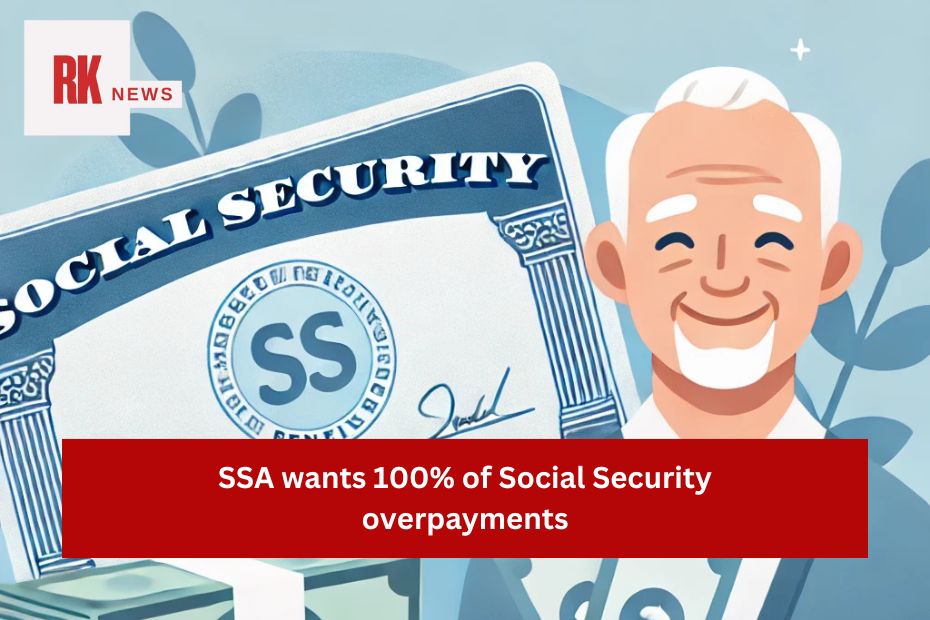The Social Security Administration (SSA) is tightening its approach to recouping overpayments. Starting March 27, beneficiaries will face 100% withholding of monthly benefits until debts are repaid. This replaces the Biden-era policy that capped withholdings at 10% to reduce financial hardship.
Why the Shift? Unpacking the SSA’s Rationale
Fiscal Responsibility & Historical Context
- Goal: Recover $7 billion in overpayments over the next decade.
- Policy Revival: Returns to Obama/Trump-era standards, emphasizing stricter repayment to protect Social Security trust funds.
- SSA Statement: Acting Commissioner Lee Dudek called this a “necessary step to ensure program integrity,” stressing the agency’s duty to safeguard taxpayer dollars.
The Overpayment Problem
- Scale: While only 1% of payments are improper, errors totaled $72 billion from 2015–2022.
- Root Causes:
- Beneficiary Errors: Failing to report income, marital status, or living arrangements.
- SSA Staff Delays: Slow updates to beneficiary records.
- Complex Calculations: Mistakes in benefit formulas or eligibility criteria.
Who’s Affected? Understanding the Impact
Vulnerable Groups
- Retirees & Disabled Workers: Those relying solely on Social Security for income.
- Low-Income Seniors: Already struggling with inflation and rising healthcare costs.
- Working Beneficiaries: Individuals balancing part-time work and benefits (e.g., exceeding the $23,400 annual earnings limit).
Real-Life Consequences
- Case Study: A retiree receiving $1,800 per month could lose their entire check for about 5.5 months until they repay a $10,000 overpayment, leaving them with no income during that time.
- Medicare Risks: If 100% of benefits are withheld, Medicare Part B premiums ($174.70/month in 2024) may go unpaid, risking coverage gaps.
Key Policy Comparison
| Aspect | Old Policy (Pre) | New Policy (Post-March 27) |
|---|---|---|
| Withholding Rate | 10% of monthly benefits | 100% of monthly benefits |
| Effective Date | Adjusted in 2021 | March 27 |
| Exceptions | Case-by-case adjustments | Pre-March 27 cases remain at 10% |
| SSI Overpayments | 10% withholding | Unchanged (10% remains) |
Medicare & Overpayments: A Looming Crisis
- Current Process: Medicare premiums are auto-deducted from Social Security checks.
- New Dilemma: If checks are fully withheld, how will Medicare payments be handled?
- Expert Warning: Former SSA manager Ed Weir notes, “Seniors could lose Medicare coverage if the SSA doesn’t clarify this soon.”
Protecting Your Benefits: A Step-by-Step Guide
1. Request a Waiver (SSA Form 632)
- Eligibility: Prove the overpayment wasn’t your fault and repayment would cause hardship.
- Required Docs: Bank statements, medical bills, or proof of income.
2. Appeal the Decision (SSA Form 561)
- Grounds for Appeal: Errors in SSA’s calculations or evidence of timely reporting.
- Deadline: File within 60 days of the notice.
3. Negotiate Repayment Terms
- Options:
- Request a lower withholding rate (e.g., 5-15%).
- Propose a lump-sum settlement if feasible.
4. Seek Legal Help
- Free Resources: Contact local Legal Aid or the Senior Citizens Law Center.
By the Numbers: Overpayments in Context
- Average Overpayment: 2,000–10,000 per beneficiary.
- Top Causes:
- Unreported income (34%).
- Marital status changes (28%).
- Administrative errors (22%).
The Bigger Picture: Policy Criticisms & Advocacy
Critics Speak Out
- Nancy Altman (Social Security Works): “This policy punishes vulnerable Americans for bureaucratic mistakes.”
- AARP’s Stance: Urges Congress to mandate a 20% withholding cap to balance repayment and beneficiary needs.
SSA’s Response
- The agency claims it will “prioritize hardship cases” but has not released detailed guidelines.
Conclusion: Navigating the New Reality
The SSA’s stricter overpayment policy underscores a tension between fiscal accountability and beneficiary welfare. While recovering funds is critical, 100% withholding risks devastating seniors who depend on every dollar.
Advertisement
Key Takeaways:
- Act Immediately if you receive an overpayment notice.
- Explore Waivers & Appeals to avoid financial ruin.
- Stay Informed: Monitor SSA updates on Medicare deductions.
Pro Tip: Use the SSA’s mySocialSecurity portal to track your benefits and report changes promptly.
Advertisement
Advertisement
